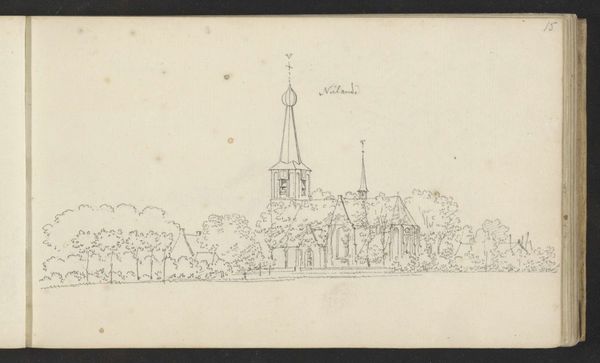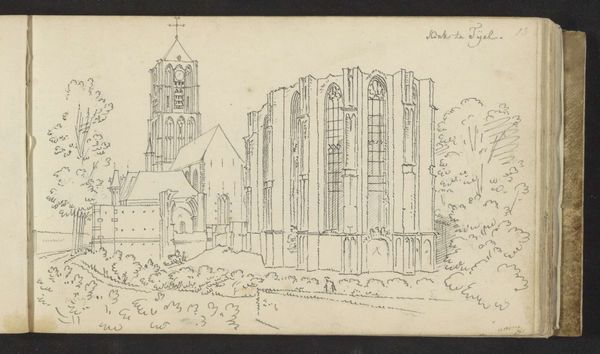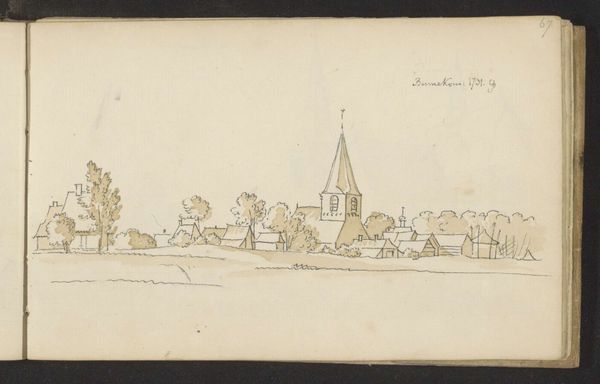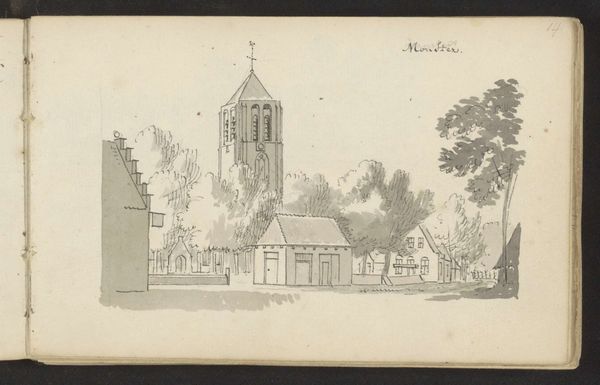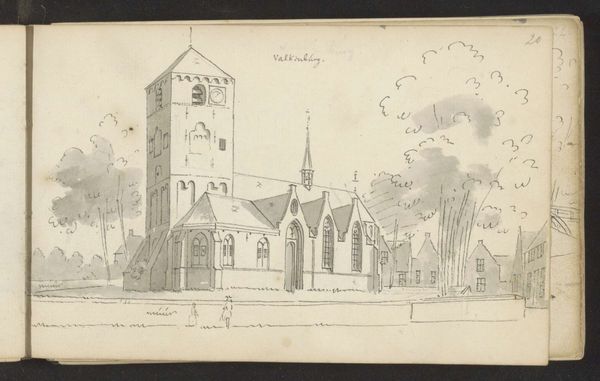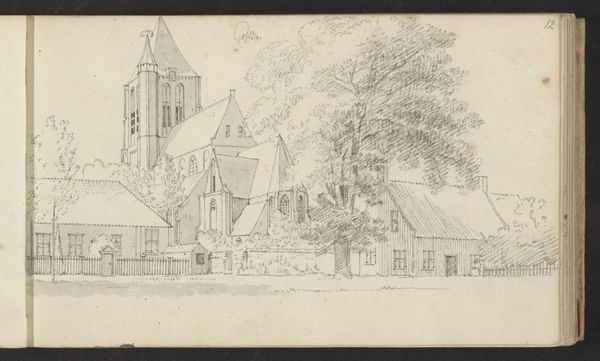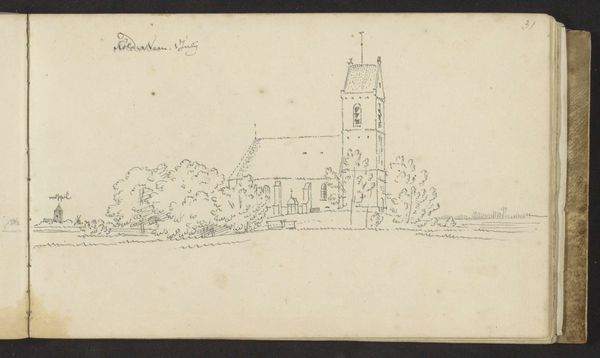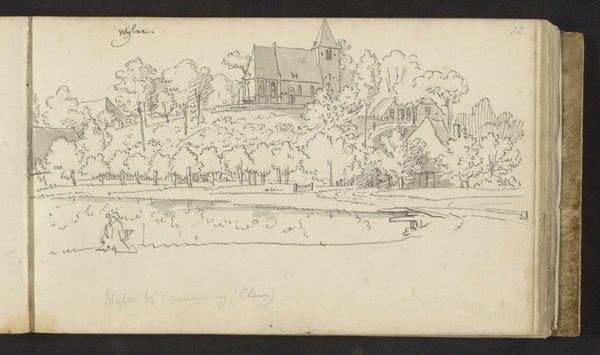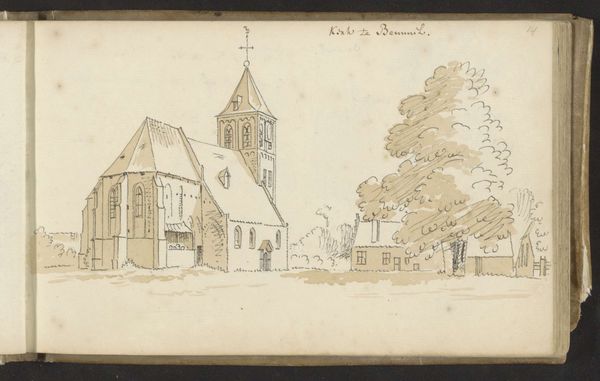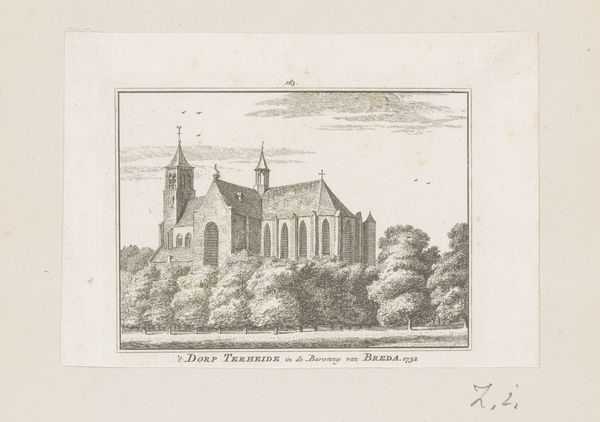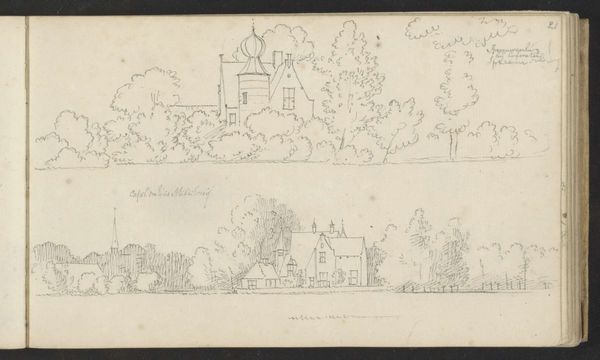
drawing, ink, pen
#
drawing
#
pen sketch
#
landscape
#
ink
#
pen
#
cityscape
#
realism
Copyright: Rijks Museum: Open Domain
Curator: Looking at this drawing, "Gezicht op De Lier met Domtoren," created in 1731 by Abraham de Haen the Younger, one is immediately struck by the contrast of architectural elements and organic shapes of the surrounding landscape. Editor: Yes, a serene stillness pervades this pen and ink sketch. The towering Domtoren anchors the composition while the gentle foliage creates a soft border for the cityscape. Curator: It’s important to understand that images like this were made in response to burgeoning urban expansion and civic pride. The drawing captures not just the appearance, but the developing urban identity, emphasizing landmarks such as church towers as the town transforms. Editor: The texture achieved with the pen is remarkable; you can almost feel the handmade paper, the craftsman tracing the urban planning of the period! But looking beyond architectural history, it makes me wonder about the distribution and consumption of works on paper during the Dutch Golden Age. Curator: And consider the role of the Rijksmuseum as an institution in preserving and presenting pieces like this. The social context shapes what's valued. For example, did this piece celebrate faith, town identity, or even Dutch artistry and engineering? Editor: It certainly begs questions about patronage too. Was it commissioned, or made independently, sold as a singular item, or as part of a series? The labor involved in such a detailed pen work reminds us that art production of this quality was a luxury, reliant on societal resources. Curator: These kind of landscapes provide historical data of use to urban development too; you could trace population shifts through the sizes of the cities represented, comparing it to documents that recorded tax revenue. Editor: The piece also has implications regarding the use of labor as artistic labor, the distribution channels used, or even the culture from which such illustrations emerged and catered for the urban art market during that era. Curator: Precisely. Analyzing works such as this informs our understanding of socio-cultural shifts and the historical underpinnings of the art world as a system, in addition to Dutch city development in the 1700s. Editor: Exactly. A material examination reveals layers of socioeconomic narratives behind the artwork!
Comments
No comments
Be the first to comment and join the conversation on the ultimate creative platform.
